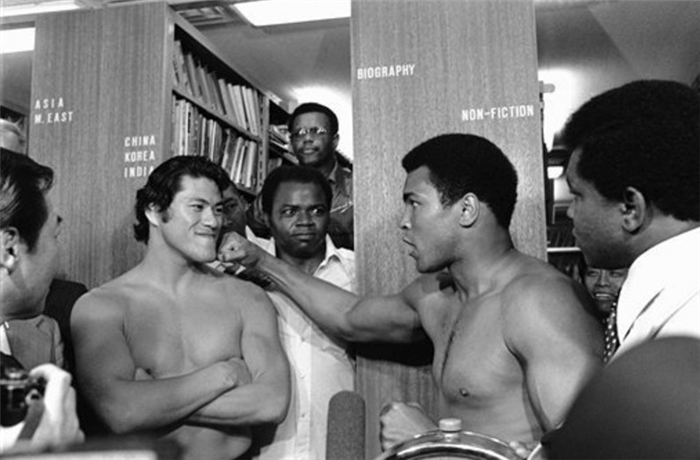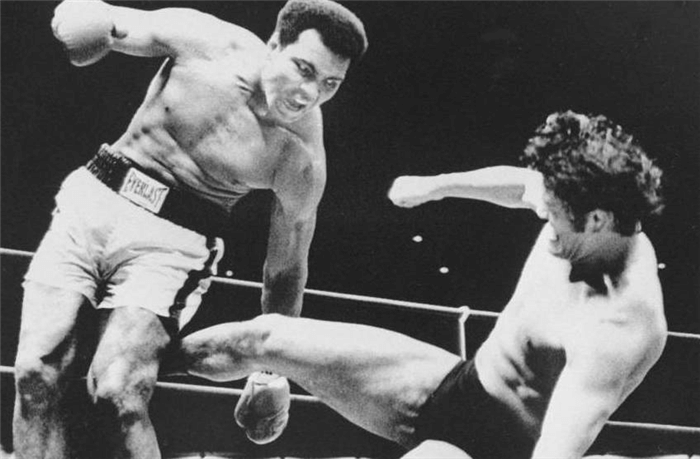In 1976, Muhammad Ali agreed to a mixed-rules fight with Japanese wrestling legend Antonio Inoki after the pair had flirted with the idea of a crossover bout.
Josh Gross told newstalk.com: “It was a very busy time for Muhammad Ali. This was eight months after the ‘Thrilla in Manilla’, he had three boxing bouts between the contest with Joe Fraizer and this contest with Antonio Inoki.”
Inoki to many would be an unknown quantity, but in Japan – even to this day – he was an icon of professional wrestling.
Back in 1976, sort of during the tail-end of his decorated career, Ali decided to partake in an exhibition bout against Japanese professional wrestler and martial artist Antonio Inoki.

Ali is best remembered for his superb reactions and head movement, his rapid footwork, and lightning-quick jab. Leg kicks are not something we would associate with him.
On the first bell in front of a capacity crowd in Tokyo, Inoki came out with a fly karate-style kick which missed spectacularly.
The wrestling icon then spent the entire first round lying down on the canvas throwing up-kicks in Ali’s direction.
Ali was quick to respond by throwing kicks back, landing a couple as he danced around him in trademark style.
In the later rounds Inoki tried continuously to chop down Ali with leg kicks again before eventually pulling guard. Much of the action involved movements similar to sliding tackles.
Some of Inoki’s kicks caused damage with some post fight reports suggesting that they had caused two blood clots in Ali’s leg which almost resulted in an amputation.

Throughout the duration of the 10-round exhibition, Ali only succeeded in landing a handful of jabs on his opponent’s chin.
The fight was eventually declared a draw but viewers were generally not impressed. The New York Times labelling it as Ali’s least memorable bout.
Mixed martial artists existed in the 1970s but they weren’t competing for championship belts under sanctioned rules like they are in the UFC or Bellator.
So even if the bout between Ali and Inoki was a disappointing spectacle at the time it was the first of its type.
Ali was involved in other exhibitions, especially at the end and after his career, however none of them were quite like this.
